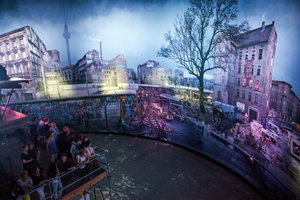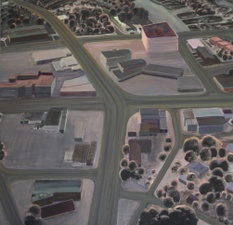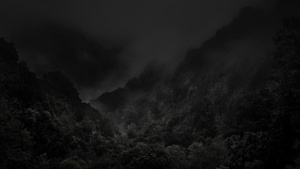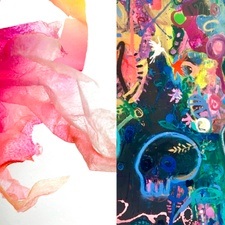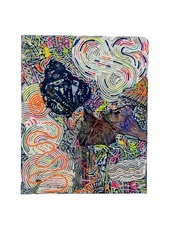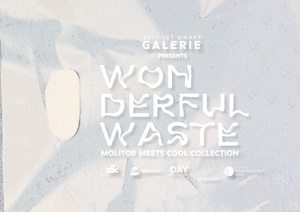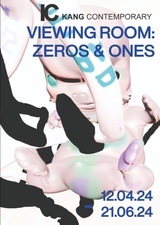the power and pleasure of books and possessions
Das sagt der/die Veranstalter:in:
neugerriemschneider is pleased to present the group exhibition the power and pleasure of books and possessions at our Linienstrasse location, featuring Ai Weiwei, Pawel Althamer, Thomas Bayrle, James Benning, Billy Childish, Keith Edmier, Olafur Eliasson, Andreas Eriksson, Noa Eshkol, Mario García Torres, Isa Genzken, Shilpa Gupta, Thilo Heinzmann, Sharon Lockhart, Renata Lucas, Michel Majerus, Antje Majewski, Mike Nelson, Jorge Pardo, Elizabeth Peyton, Tobias Rehberger, Tomás Saraceno, Simon Starling, Thaddeus Strode,
Rirkrit Tiravanija and Pae White. On view are paintings, photographs, graphic works, tapestries, sculptures and installations by each of our artists that showcase the collected trappings of lives led inquisitively. Representations of texts, material keepsakes, preserved ephemera or symbols of personal pursuits are accompanied by formal and conceptual portrayals of the shelves on which they may be placed.
the power and pleasure of books and possessions pays homage to the Korean art of chaekgeori. Still-life paintings at their core, chaekgeori images are constructed around bookcases as their central elements. Bound tomes are stacked within each of the shelves’ compartments, set alongside a diverse palette of antiquarian or symbolism-laden objects, and building on the Renaissance tradition of accruing and exhibiting relics of knowledge. Together, they stand as forms of portraiture, depicting subjects not by their corporeal features, but rather through possessions and the associations they foster.
Among the works on view here is Pae White’s tapestry Bookshelf South & Bookshelf North (2013) - a diptych that furthers the artist’s ongoing engagement with material translation, and employs large-scale weaving to replicate two of the artist’s own filled bookcases. The spines of each volume shown remain legible, outlining White’s interests and sources of inspiration, affording an intimate look at her process and identity. The metal shelves comprising Mike Nelson’s The Asset Strippers (anthropomorph) (2019) similarly display stores of knowledge and encapsulations of specific spaces and times. Sourced as part of the artist’s repurposing of long- disused industrial machinery into sculptural monuments, sparse assemblages of knitting-machine parts and woven cloth strips line the cabinet. The objects that Nelson spotlights hold resonance through their former utility and serve as relics of a bygone era.
With Ruyi (2012), Ai Weiwei creates an interpretive translation of the eponymous Chinese-Buddhist ceremonial scepter, sculpted here from porcelain. Seen as a harbinger of luck, and used historically within large groups to signal the right to speak, the ruyi concisely encapsulates the strength of expression through an unassuming form. His intricately crafted, intimately scaled figurine fuses the contours of an aquatic creature with adornments of the human body’s vital internal organs, aligning the two beings in a symbolic show of unity. Shilpa Gupta’s Untitled (Spoken Poem in a Bottle) (2018 - ongoing) is a huddled grouping of glass bottles, each of which contain immaterial excerpts from poems whose authors were the subjects of repression or imprisonment as results of their writings. Gupta presents intangible texts by speaking them into the receptacles, bringing to the forefront the interactions between language, self-determination, isolation and the subversion of dominant power structures. The published message also takes on new embodiments in A View Becomes a Window (2013) by Olafur Eliasson, in which an anthology of hand-blown glass panes in vibrant tones are bound together as pages of a book. Each inscribed with ellipses, the sheets trace an unwritten chronicle of the artist’s long-standing inquiry into physical perception, optical illusion and their interface with environment and landscape.
Chaekgeori’s significant use of latticework as both motif and organizational structure predates Modernism’s and Minimalism’s integration of the grid as a radical, pared-down means of rejecting artistic tradition. However, it diverges from this notion by embracing the referential and self-referential: Its open-faced cabinets are vast networks of self-contained spaces that are at once insular, acting as autonomous microcosms unto themselves, and intertwined, functioning as part of a larger, nonhierarchical, decentralized system. The densely clustered formation of works in dialogue in the power and pleasure of books and possessions mirror this notion, highlighting the enduring, acutely relevant magnetism and significance of collecting, researching, displaying and understanding today, and the desire to make sense of the world through order.
For further press information and imagery, please contact Jonathan Friedrich Stockhorst at neugerriemschneider: +49 30 288 77277 or jonathan@neugerriemschneider.com.




